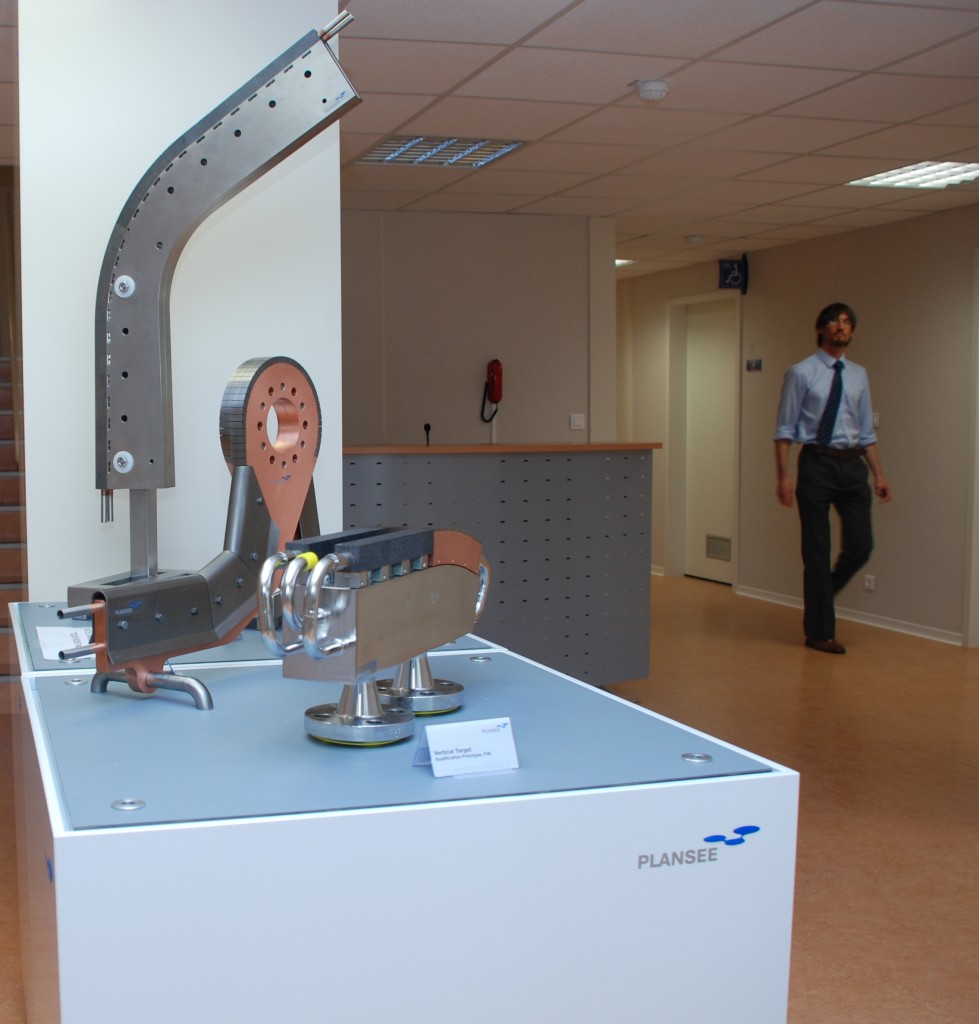ITER NEWSLINE
74
New targets at Headquarters
Sabina Griffith
New targets at Headquarters

The inner and outer vertical targets are the plasma-facing components and therefore have to remove the heat load coming from the plasma. The dome baffles neutrals and protect the cassette body.
The divertor is one of the key features of the ITER machine. Its function is to extract heat and helium ash, as well as other impurities from the plasma, acting like a giant vacuum cleaner. It is also the main interface between the hot plasma and the material surfaces. The ITER divertor consists of a cassette body made up of 54 remotely removable cassettes, each holding three plasma-facing components: the inner and outer targets and the dome.
In the new exhibit, kindly provided to ITER by the Austrian company Plansee, there is a mockup of the inner vertical target, a qualification prototype of the same, plus the dome. The vertical target mockup is one-metre long; the final version will be 1.7 metres. It consists of four parallel high heat flux units, assembled on a steel support structure. The current design foresees two different types of armour: tungsten monoblocks on the upper curved section of the vertical target, and carbon-fibre composite monoblocks on the lower straight section. An alternative design was built that uses tungsten flat tiles on the upper curved section instead of monoblocks. Both designs comprise precipitation-hardened CuCrZr tubes which allow the coolant—in this case water—to pass through the composite just below the hot armour.
The third exhibit is a full-scale mockup of the dome. It consists of six parallel high heat flux units, assembled on a steel support structure. The high heat flux components are designed to have complete tungsten flat tile armour, joined by electron beam welding onto a CuCrZr-heat sink, comprising screwed tungsten heat shields in the lower portion.
return to Newsline #74


